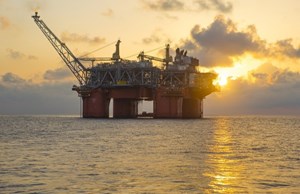Gulf of Mexico oil drilling makes comeback, but won’t close supply gap
(Bloomberg) — A new wave of oil platforms is sweeping into the U.S. Gulf of Mexico as crude prices are riding historic levels and demand for barrels is higher than ever.
But don’t count on the new production to close the oil-supply gap that has plagued the world’s economies since the pandemic. Even with the new platforms coming online, Gulf oil production won’t grow substantially in the coming years as mature fields decline, according to analysts.
BP Plc’s Argos and Shell Plc’s Vito — floating production platforms that are taller than 20-story buildings and have decks the size of football fields — will start pumping crude off the Louisiana shore later this year. They will join Murphy Oil Corp.’s King Quay, a behemoth that started producing oil in April, also off the Louisiana coast. Others from Chevron Corp., Shell and Beacon Offshore Energy are expected to start production in two years. Once all six platforms are online, they could produce up to 560,000 barrels a day.
The timing for these new Gulf projects couldn’t be better. The offshore sector has been battered by back-to-back busts and a pandemic that forced mass layoffs and bankruptcies. But even with oil at $100 a barrel, a big comeback is unlikely. After a decade that saw one of the worst oil spills in U.S. history, shale’s ascendance and mounting climate-change concerns, some experts believe that the sun may be setting on the Gulf.
“I think it has a future, but it’s not as bright as it once was,” said James West, an analyst at Evercore ISI. “There’s probably some growth still left in the Gulf of Mexico, but it’s a more modest growth.”
Last year, Shell said its global oil production had peaked in 2019 while BP in 2020 said it would cut oil and gas production worldwide 40% by 2030. Shell and BP are the two biggest Gulf producers.
Since the first offshore rig was built off the coast of Louisiana in 1938, the Gulf of Mexico has been a reliable source of domestic oil. Its deep trove of reservoirs is responsible for about 14% of the U.S.’s crude production, second only to the country’s prolific shale fields. Gulf producers extracted 1.7 million barrels of oil per day in January, still shy of the pre-pandemic record of 2 million barrels a day.
The U.S. Energy Information Administration expects Gulf output to remain flat through 2023, while S&P Global Commodity Insights projects production may recover to the pre-pandemic record by the end of the year. Energy consulting firm Wood Mackenzie is more bullish, forecasting crude and natural gas production this year could jump to the equivalent of 2.3 million oil barrels per day.
Offshore projects cost billions and rarely come online in less than a decade. The sector's inability to quickly ramp up production when geopolitical disruptions like Russia's war in Ukraine upend markets is one reason why U.S. oil production at 11.8 million barrels a day remains below the pre-pandemic record of 13.1 million barrels a day, even with crude prices at 14-year highs.
The number of new offshore discoveries worldwide has fallen to a 75-year low after oil companies slashed their budgets for deepwater exploration. Even as the industry recovers from the pandemic, its offshore investment globally is set to rise only 7% to $155 billion this year, compared with an 18% increase in shale investments, according to Rystad Energy, a consulting firm.
Companies have slashed deepwater exploration budgets primarily in response to recent oil busts and the pandemic, which squeezed revenues. The industry's poor financial performance in recent years, as well as investor pressure due to environmental concerns, have hampered its ability to tap Wall Street to finance offshore projects. Worries that today’s high prices won’t last make investing in expensive, time-consuming offshore projects a hard sell.



